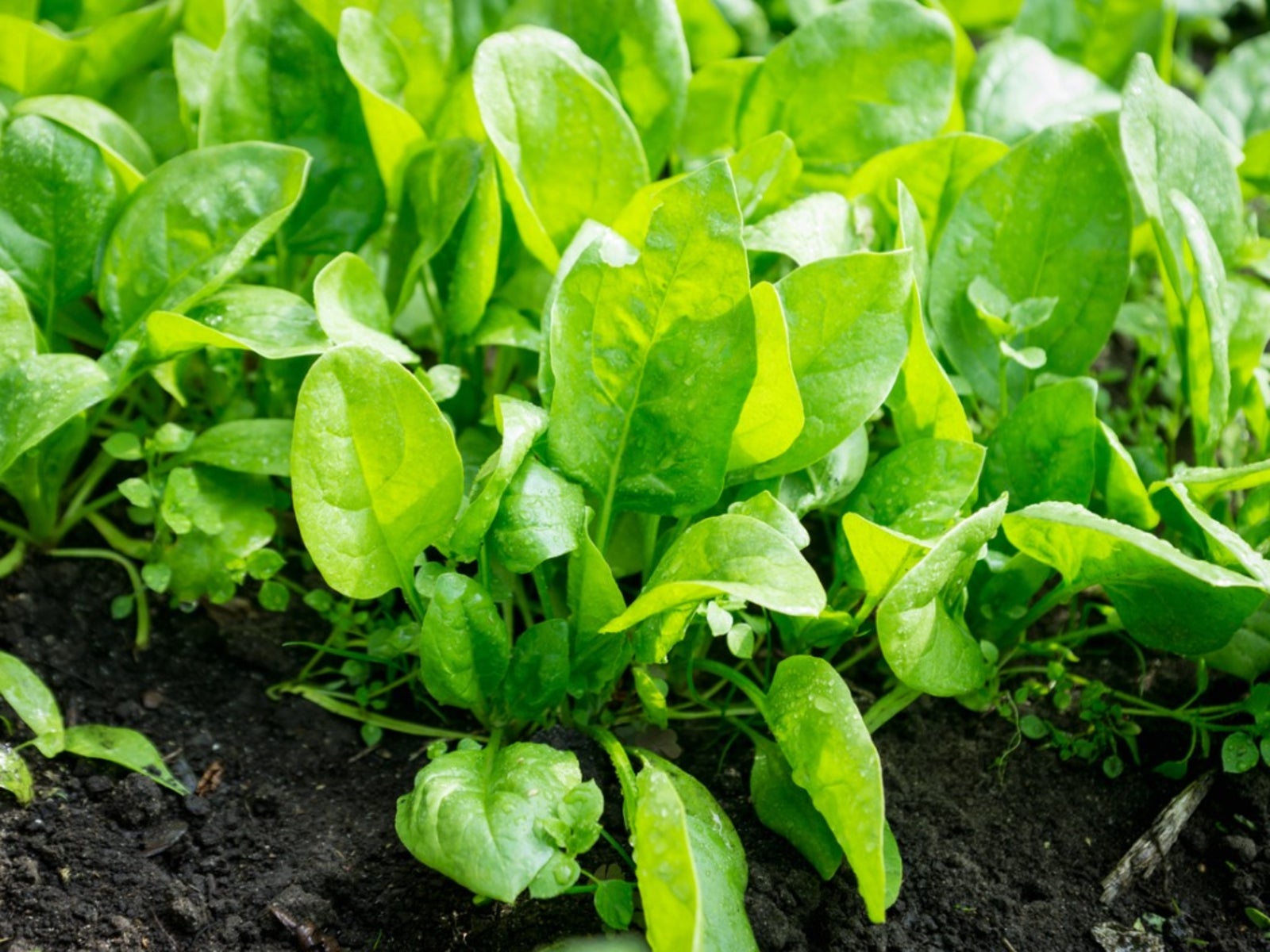Common Spinach Problems: Dealing With Spinach Pests And Diseases


Easy to grow and quick to harvest, spinach is one of the mainstays of the vegetable garden. It grows best in the cool part of the year, but with bolt-resistant varieties and a little shade, you can grow spinach in summer too. This nutritious vegetable is tasty when served raw or cooked, but unfortunately, pesky insects love it just as much.
Common Spinach Pests
There are a number of insects that feast on spinach plants. However, the most common spinach pests that affect these plants include the following:
- Cutworms and wireworms - Cutworms cut young seedlings off at ground level and wireworms feed on the foliage and roots. Older transplants are less appealing to these insects than tender seedlings. To trap wireworms, plant full grown carrots in the garden every 2 ½ to 3 feet (76-91 cm.). Pull up the carrots every two or three days and remove the trapped wireworms, then replace the carrot in the garden. Cutworms respond to Bacillus thuringiensis (Bt) and spinosad spray.
- Flea beetles - Flea beetles feed on young foliage. The damage consists of a number of small holes, leaving the leaf looking as though it's been hit by a blast from a shotgun. The leaves sometimes have bleached and pitted areas as well. The insects are so tiny that you may never see them. Use reflective mulch or lay sheets of aluminum foil under the plants. Carbaryl and pyrethrum insecticides sometimes help reduce serious infestations.
- Slugs and snails - Slugs and snails also leave holes in spinach leaves. You can tell the difference by the size of the hole—slug and snail holes are much larger—and by the slime trail slugs and snails leave behind. Baits and traps are the best way to control these insects.
- Aphids - Aphids are probably the most common of spinach pests. Natural enemies generally keep them in check. If you need more help, use insecticidal soaps or neem oil.
- Leaf miners - Leaf miners leave meandering tan trails on the leaves. Since they are feeding inside the leaves, contact insecticides aren't effective. Clip off infested leaves and destroy them before the larvae have a chance to mature.
Spinach Diseases
Just as with pests, other issues with spinach can pop up in the garden. Of those most often seen are spinach diseases, which include:
- Damping off - Damping off disease causes seedlings to fall over and die soon after they emerge. Plant quality seeds and avoid overwatering to help prevent the disease. Process compost thoroughly in a hot pile before adding it to the garden soil.
- Downy mildew - Downy mildew causes yellow or light green spots on the upper surface of leaves with white fungus on the lower surface. There is no cure, and the best course of action is to remove infected plants. Preventative measures include spacing plants at the recommended distance to allow good air circulation and applying water directly to the soil to keep the foliage dry. Avoid planting spinach next year if you have problems with downy mildew this year. This gives the disease spores a chance to die out.
- Viruses - Viruses that infect spinach are often spread by insects, so control insect infestations as much as possible. There is no cure for infected plants. Pull up and destroy the plants to prevent the spread of the virus.
Tackling Common Spinach Problems
Common spinach problems and issues with spinach are sometimes caused by the way we grow the plant and environmental conditions. Spinach grows and tastes best in cool weather. In hot weather, seeds are slow to germinate and may not germinate at all. Heat also causes the plants to bolt (go to seed) quickly, ruining the flavor of the crop. Plant the seeds in late winter or early spring for an early crop or in late summer or early fall for a fall or winter crop. If you want to try growing spinach in summer, plant it where it will receive a half day of shade.
Gardening tips, videos, info and more delivered right to your inbox!
Sign up for the Gardening Know How newsletter today and receive a free copy of our e-book "How to Grow Delicious Tomatoes".

Jackie Carroll has written over 500 articles for Gardening Know How on a wide range of topics.
-
 Looking For Plants To Give You The Soft And Fuzzies? Try These 5 Fuzzy Leaf Plant Options
Looking For Plants To Give You The Soft And Fuzzies? Try These 5 Fuzzy Leaf Plant OptionsLovers of texture, drama, silver foliage and tactile plants will adore these special sensory garden additions. These fuzzy leaf plant options will leave you all aglow
By Susan Albert
-
 Get Ready For A Summer Of Hummers! Grow These Full Sun Hummingbird Plants and Flowers
Get Ready For A Summer Of Hummers! Grow These Full Sun Hummingbird Plants and FlowersIf you’re lucky enough to enjoy a sunny backyard, make sure you are maxing out on your pollinator opportunities and grow these full sun hummingbird plants and flowers
By Tonya Barnett